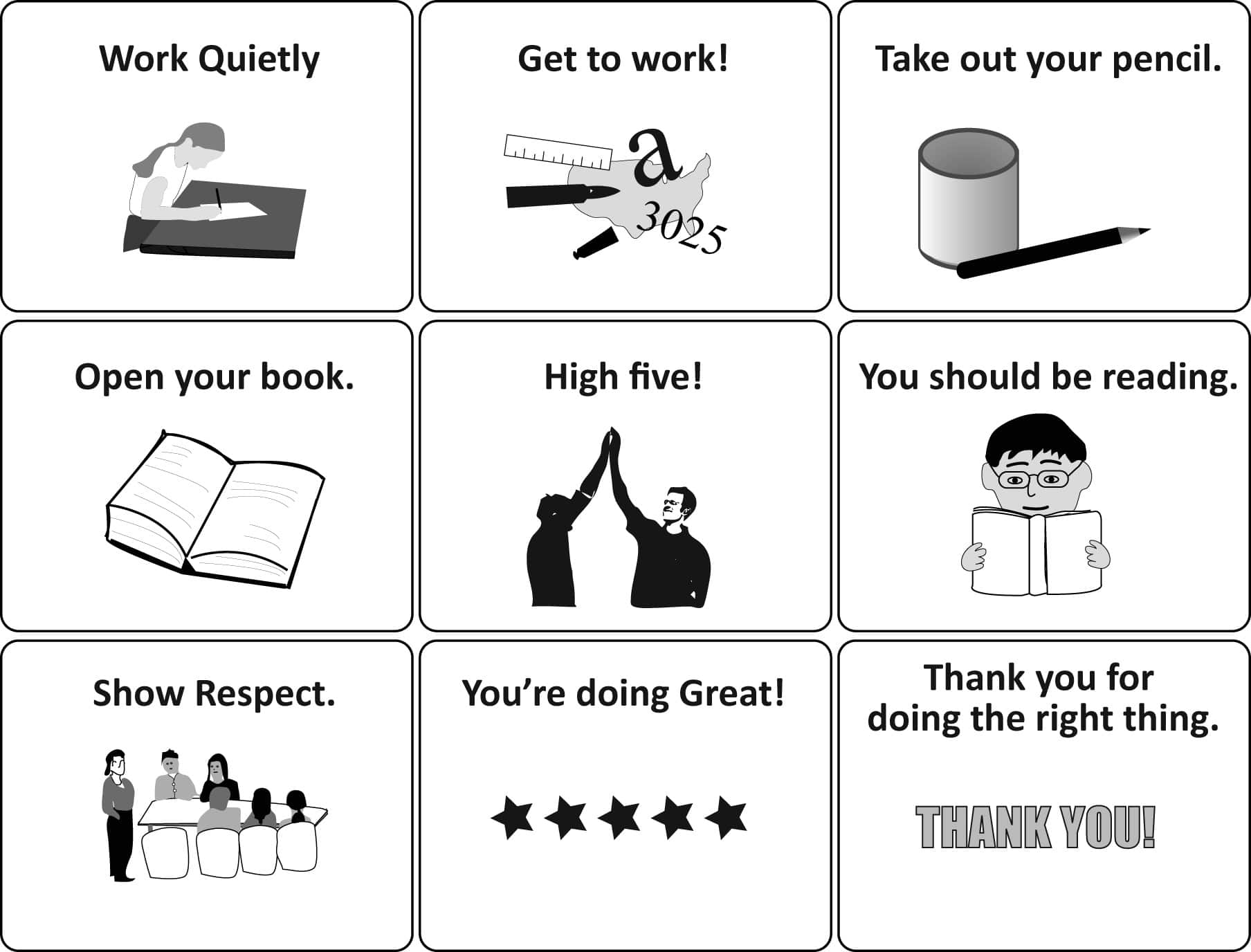How to Prevent Power Struggles

Behavior Management Cue Card Approach!
Here’s a way to quietly cue students to choose positive behavior.
Behavior management cue card instructions:
1. Print out this card or your own version of the card.
2. Choose your method:
a. Tape a card on the upper right corner of each student desk.
i. Laminate the card
ii. Use clear shipping tape to secure it to the desk
b. Hang it from a lanyard around your neck or keep it in your pocket
i. Laminate the card
ii. Punch a hole in the top of the card to hang from a lanyard
3. Explain the card to the students:
a. You might explain, “I want to use a system to help students stay on track without embarrassing students by saying something out loud. I also want a way to praise students and let them know that I’m pleased with good behavior and choices without causing embarrassment. So, I’m going to use this card to let you know my expectations or give kudos – quietly. Here is an example of the card and what the pictures mean.”
b. Explain what each picture means.
c. Explain that you do not expect students to say anything in response.
d. Explain how you will use the card.
e. When a student needs to be redirected, simply walk quietly up to the student.
i. Make eye contact – and preferably smile. The point is to minimize the possibility that a power struggle will ensue.
ii. After eye contact is made with the student, point to the picture that sends the message that you need to deliver.
iii. Do not wait for a response.
iv. Turn around and walk away.
v. If a student chooses to say something in response to a redirection, they are inviting a power struggle.
vi. Avoid taking the bait if at all possible. Turn and walk away and wait to see if the student complies.
f. When a student earns praise, simply walk up to the student, make eye-contact, smile and point to the ‘praise’ picture.
i. Do not wait for a response.
ii. Turn around and walk away.
Be generous with your praise. Students should receive 5-7 positive statements from the teacher in ratio to each negative comment.

For more information on differentiation strategies to reach ALL learners, see Susan Fitzell’s book, Special Needs in the General Classroom, Strategies That Make It Work. Available in both print and electronic versions!
Bring Susan to your campus!
Featured seminar – Differentiation Strategies to Reach ALL Learners in the Inclusive Classroom
